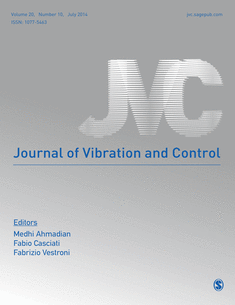July 11, 2014 weblog
SAGE investigation wises up to signs of rigged review

(Phys.org) —For movie stars, bad publicity—a fender-bender, rowdy behavior at a club, neighbor's complaints—is better than the real career-killer, which is no publicity at all. In scientific research, the opposite is true. No publicity over the veracity of research efforts in peer-reviewed journals is better than bad press. This week, however, news that a scholarly journal retracted 60 articles after discovering what it said was apparent rigged peer review drew a favorable light on SAGE, the journal's publishers. They cared enough to set the record straight themselves, independent of outside publicity. The articles were pulled after evidence pointed toward the articles having at least one author, or being reviewed by at least one reviewer, implicated in the peer review/citation ring.
The publication at the center of this story is Journal of Vibration Control, a peer-review journal with a focus on acoustics. The formal description is as a peer-reviewed journal of analytical, computational and experimental studies of vibration phenomena and their control. The word "ring" is not a sensationalist term invented by the outside press to describe the scholarly journal's discovery. The SAGE Publication team themselves called the group a ring; they said last year the then editor-in-chief and SAGE became aware of signs that there was apparently a peer review ring involving assumed and fabricated identities, to manipulate the online submission system. SAGE and the editor carried out the investigation with the full cooperation of the National Pingtung University of Education (NPUE) in Taiwan.
According to the SAGE statement on its findings, appearing to center around one person at the NPUE, the author had created various aliases on SAGE Track and, on at least one occasion, the author had reviewed his own paper under one of the aliases he had created: "While investigating the JVC papers submitted and reviewed by Peter Chen, it was discovered that the author had created various aliases on SAGE Track, providing different email addresses to set up more than one account. Consequently, SAGE scrutinised further the co-authors of and reviewers selected for Peter Chen's papers, these names appeared to form part of a peer review ring. The investigation also revealed that on at least one occasion, the author Peter Chen reviewed his own paper under one of the aliases he had created.".
In a report from The New York Times, Chen Chien-huang, the university's chief secretary, said by email on Friday morning that the university is still looking into the case. "We are continuing to investigate according to the materials just publicized by JVC," he wrote.
The journal and SAGE understand from NPUE that the man considered to be at the center resigned his post at NPUE.
The mass withdrawal of papers by the journal was first reported by Retraction Watch, a blog that reports on retractions of scientific papers.
The Guardian said that the 60 papers involved were published in print and online over the past four years.
SAGE said that, looking ahead, they have put steps in place to make the journal less vulnerable. Three senior editors and an additional 27 associate editors "with expertise and prestige in the field" were appointed to assist with the day-to-day running of the JVC peer review process.
More information: retractionwatch.com/2014/07/08 … -60-papers-retracted
© 2014 Phys.org



















